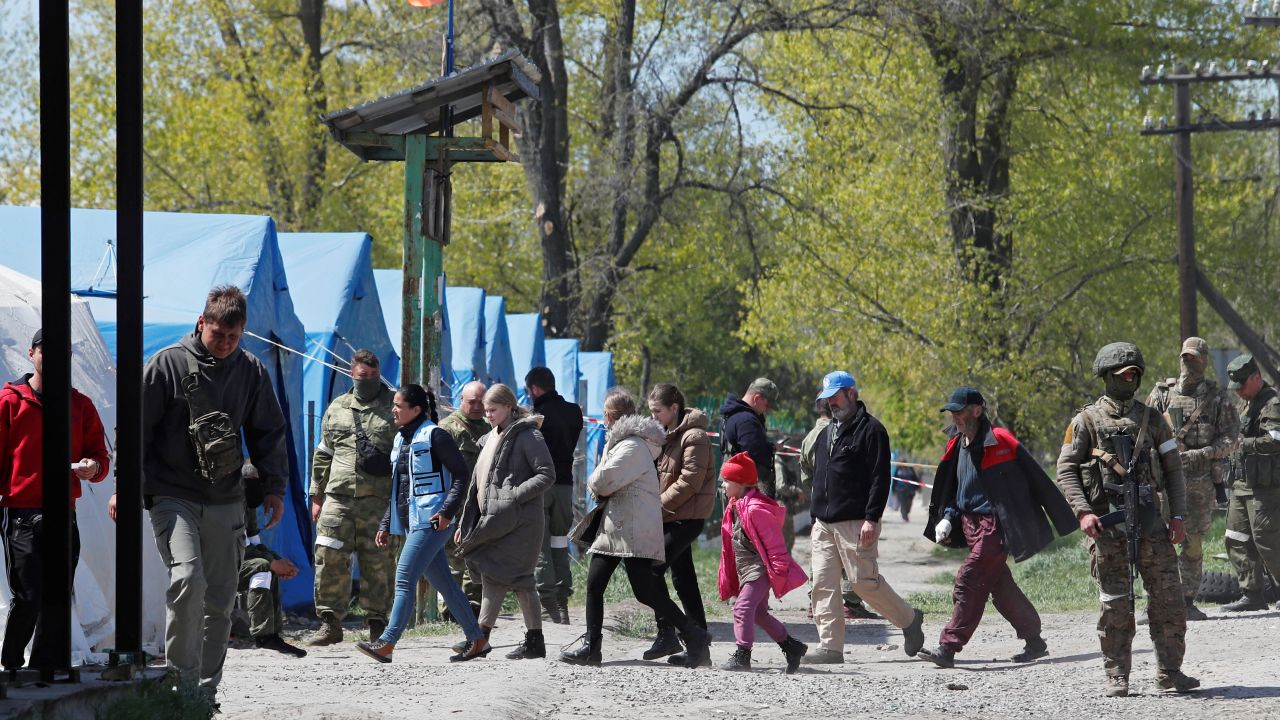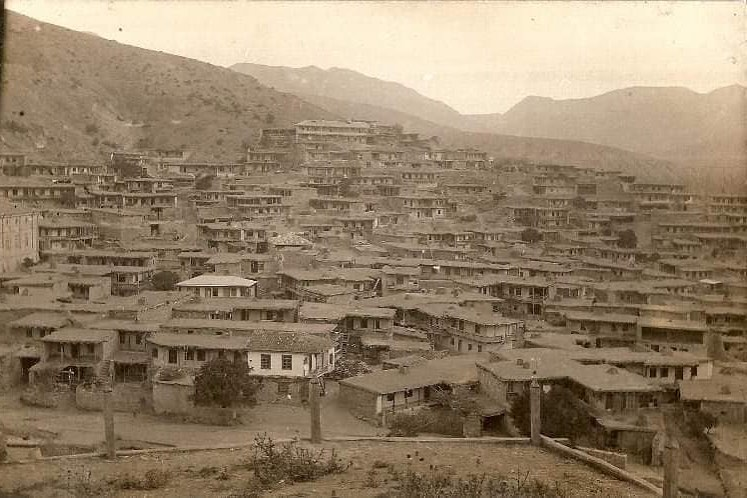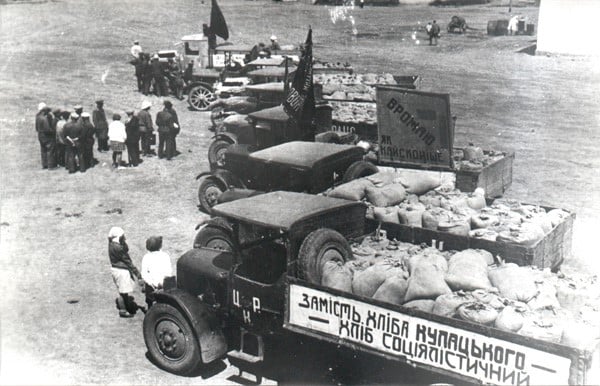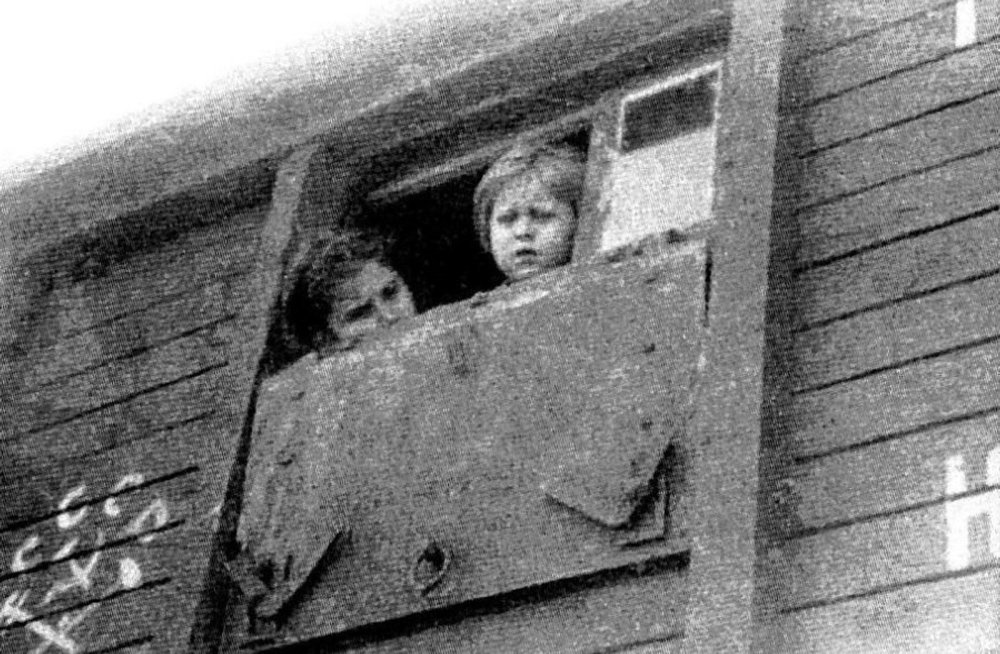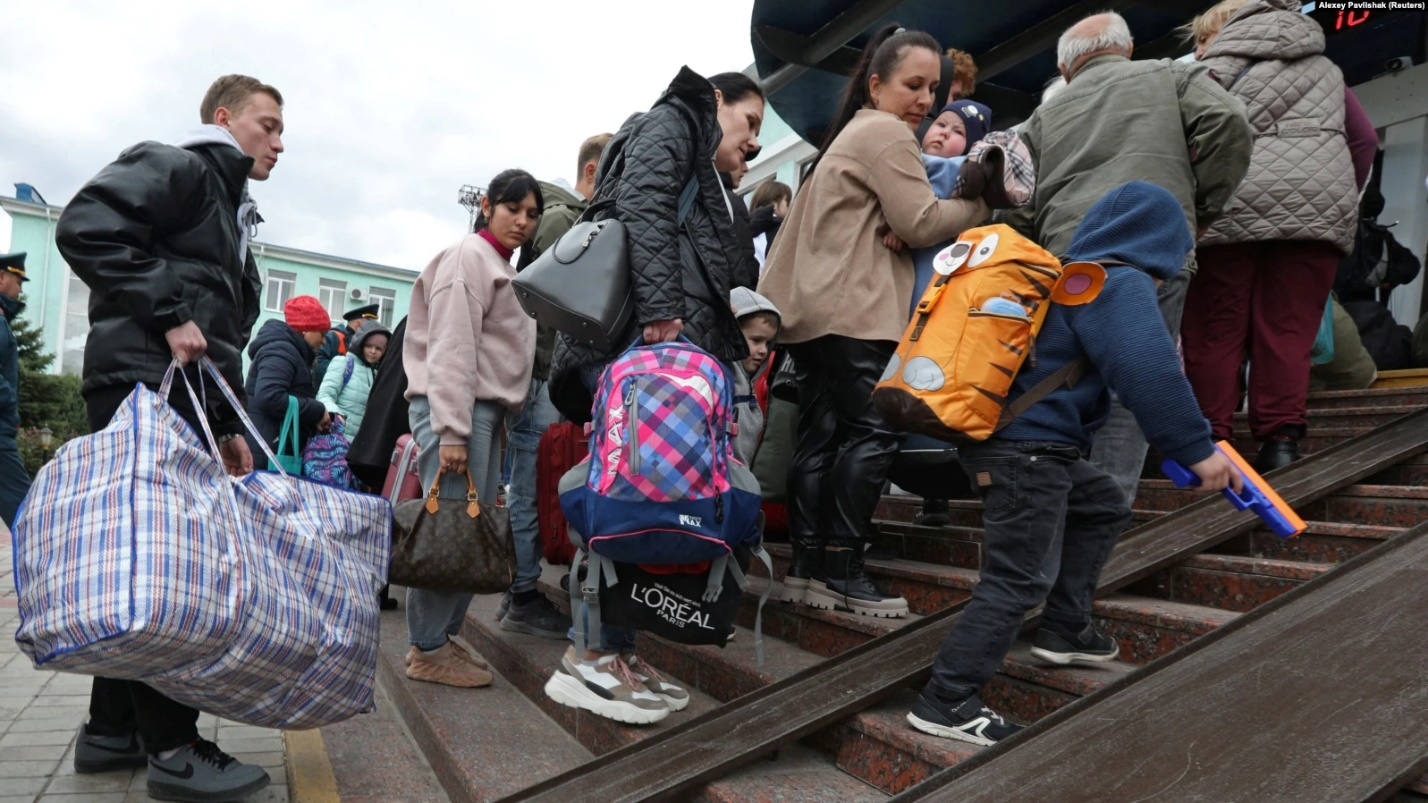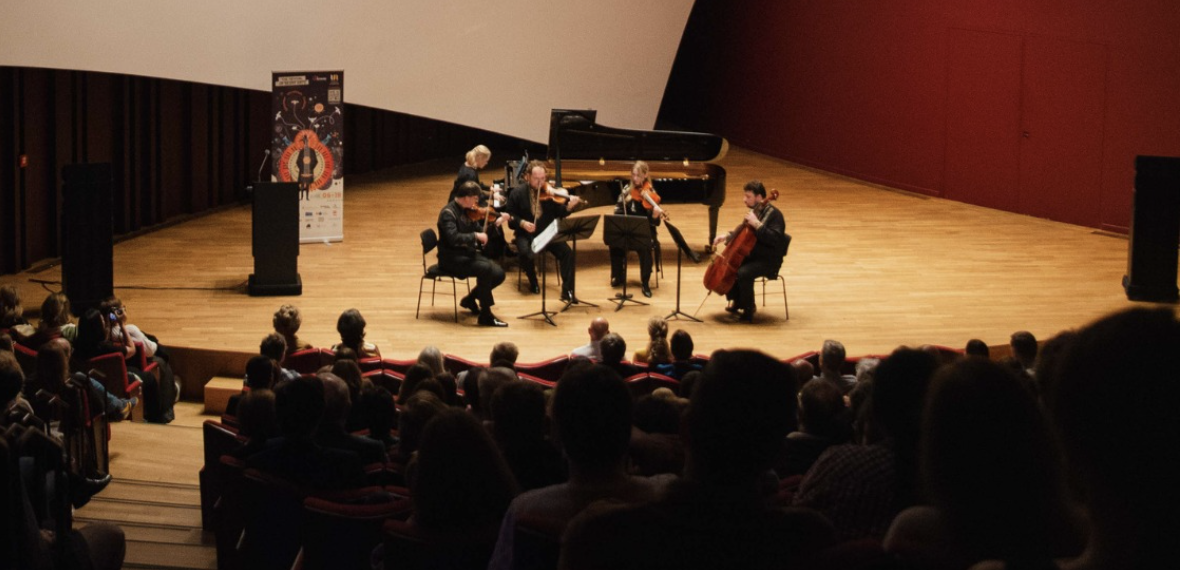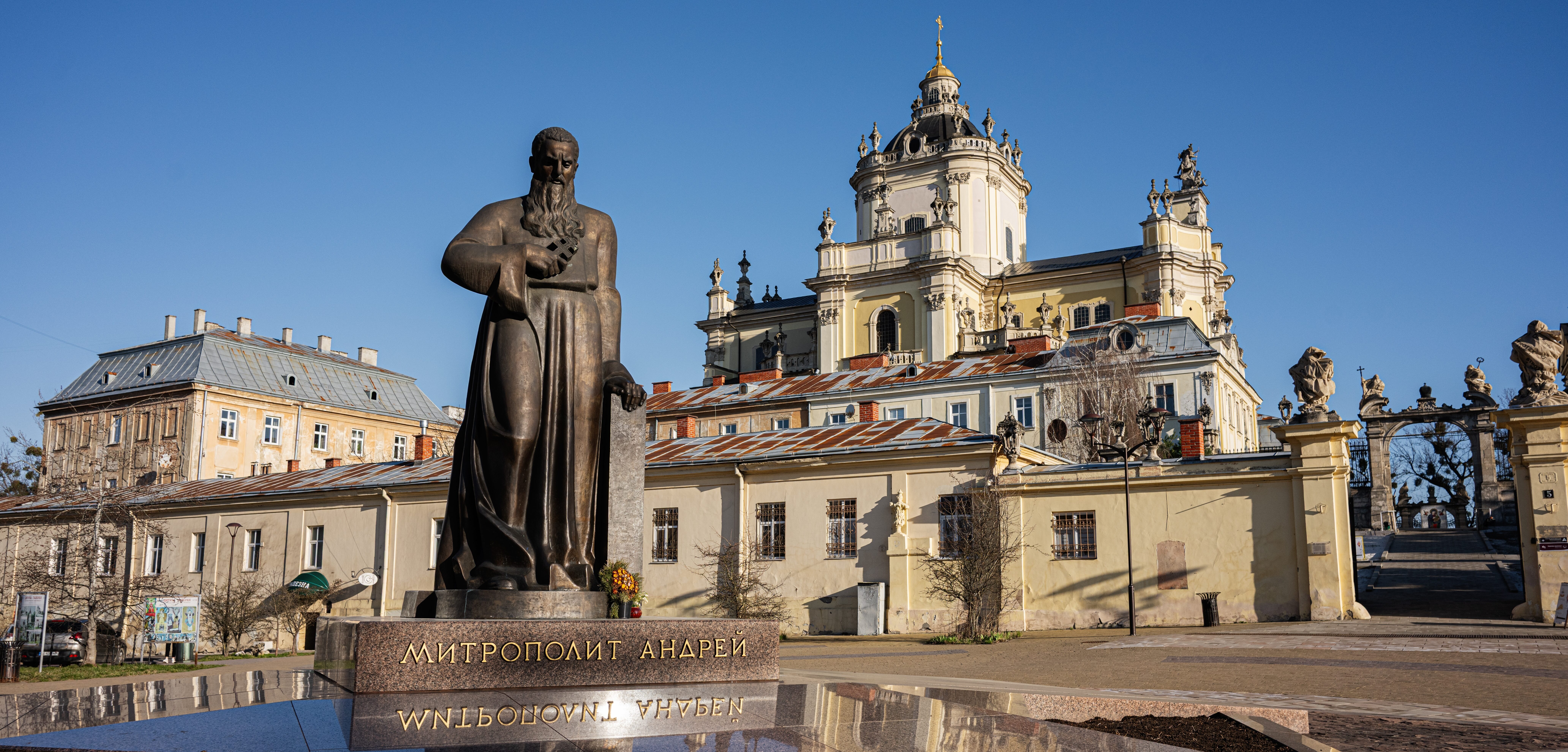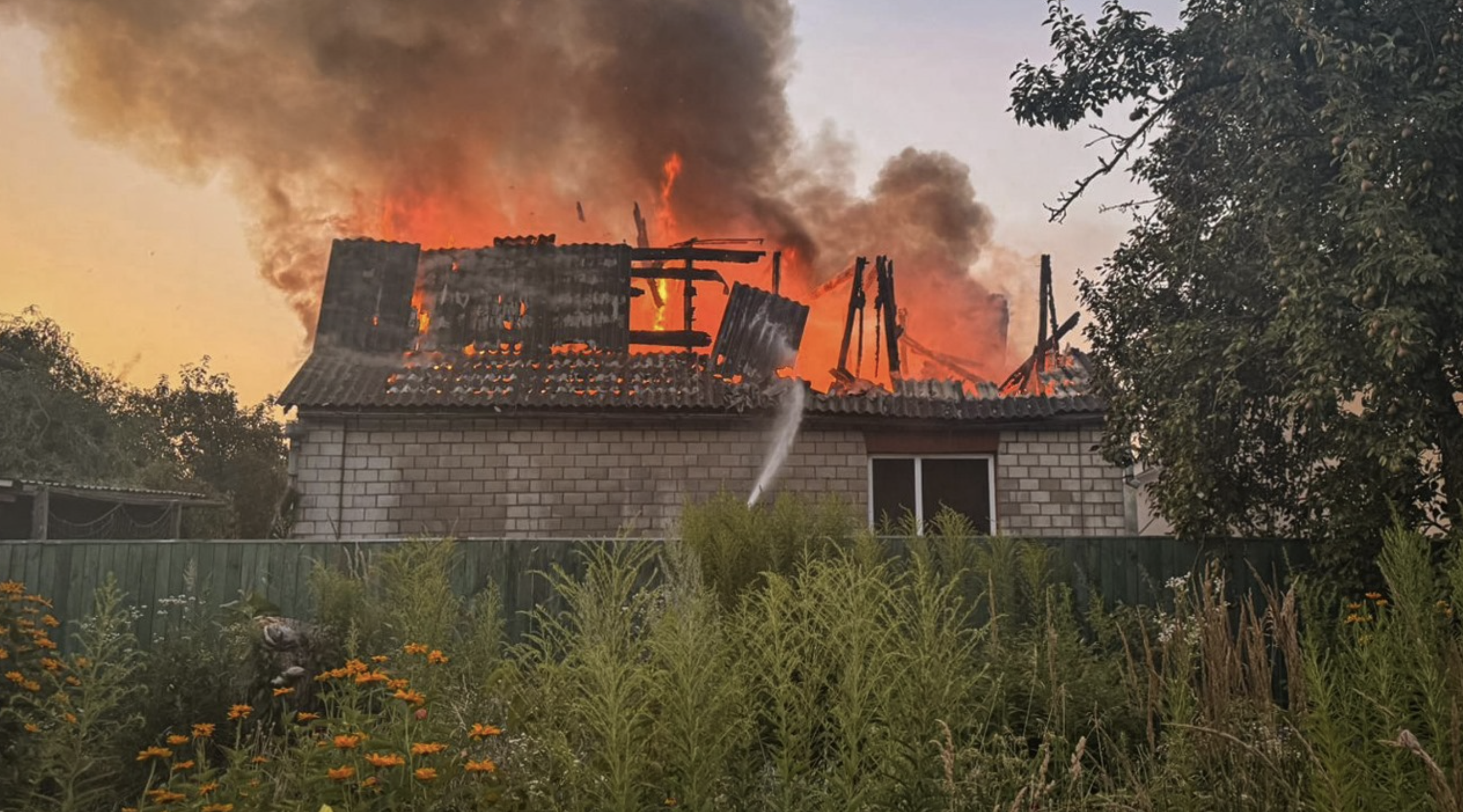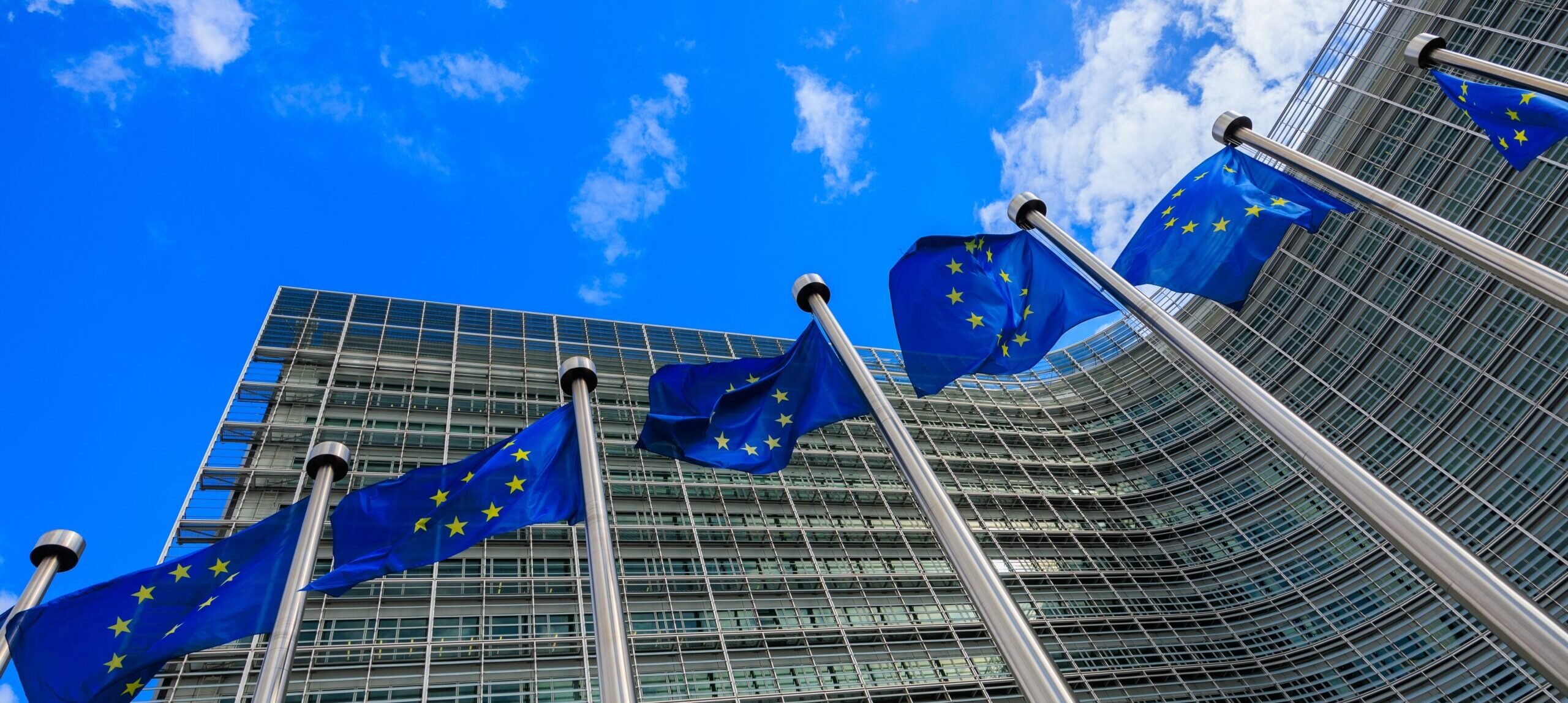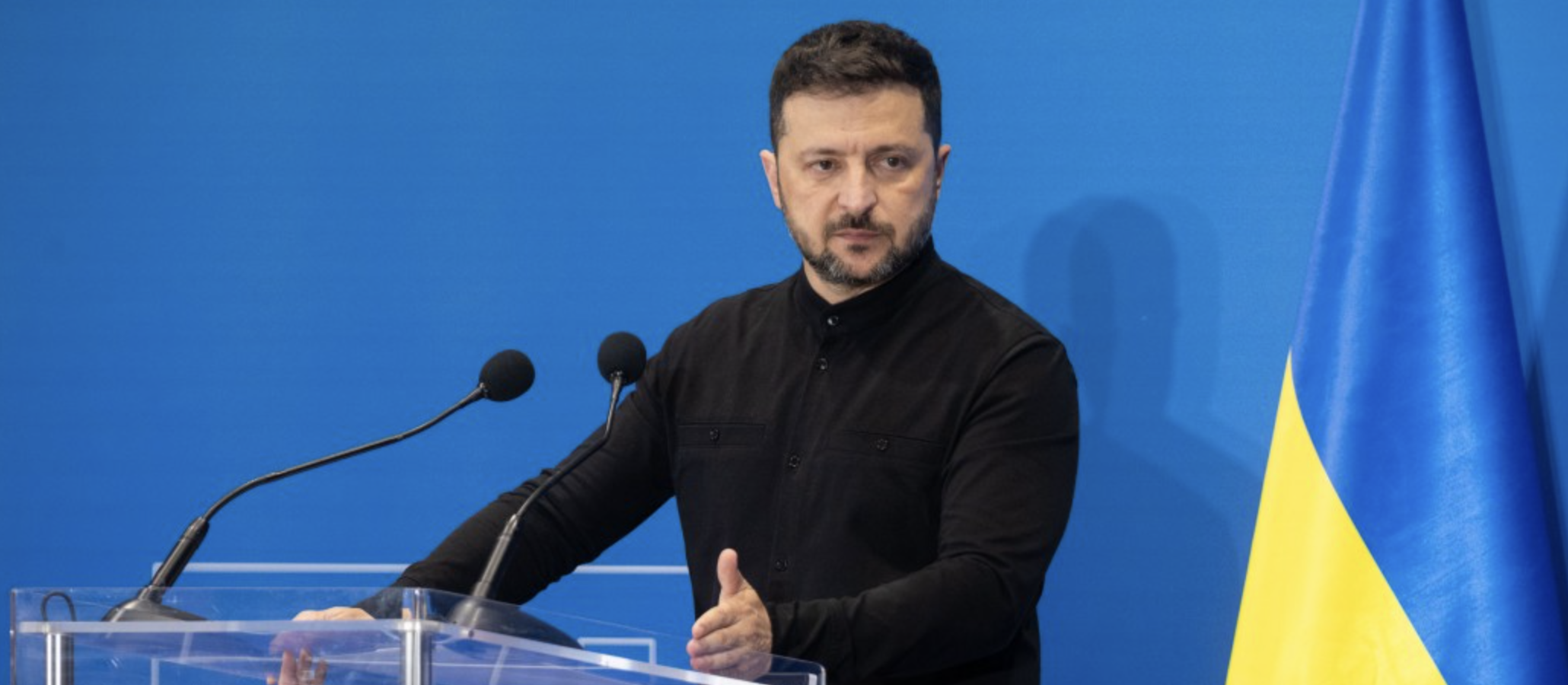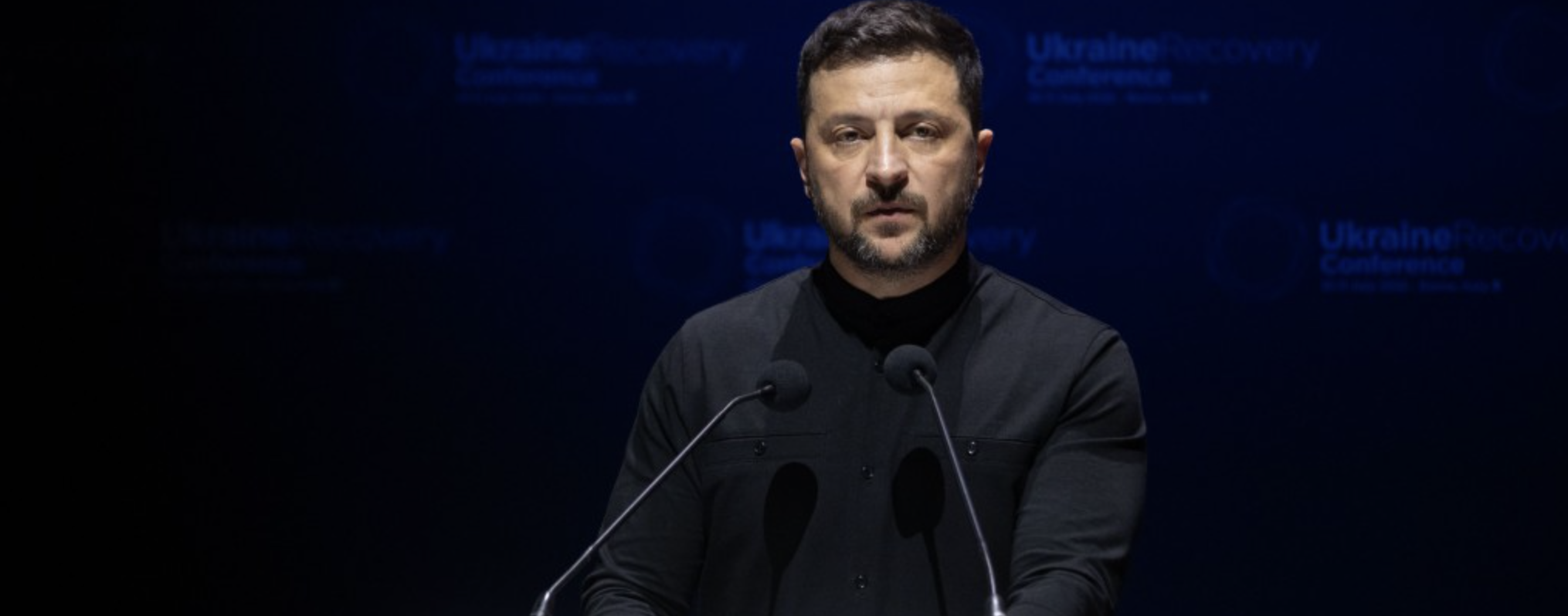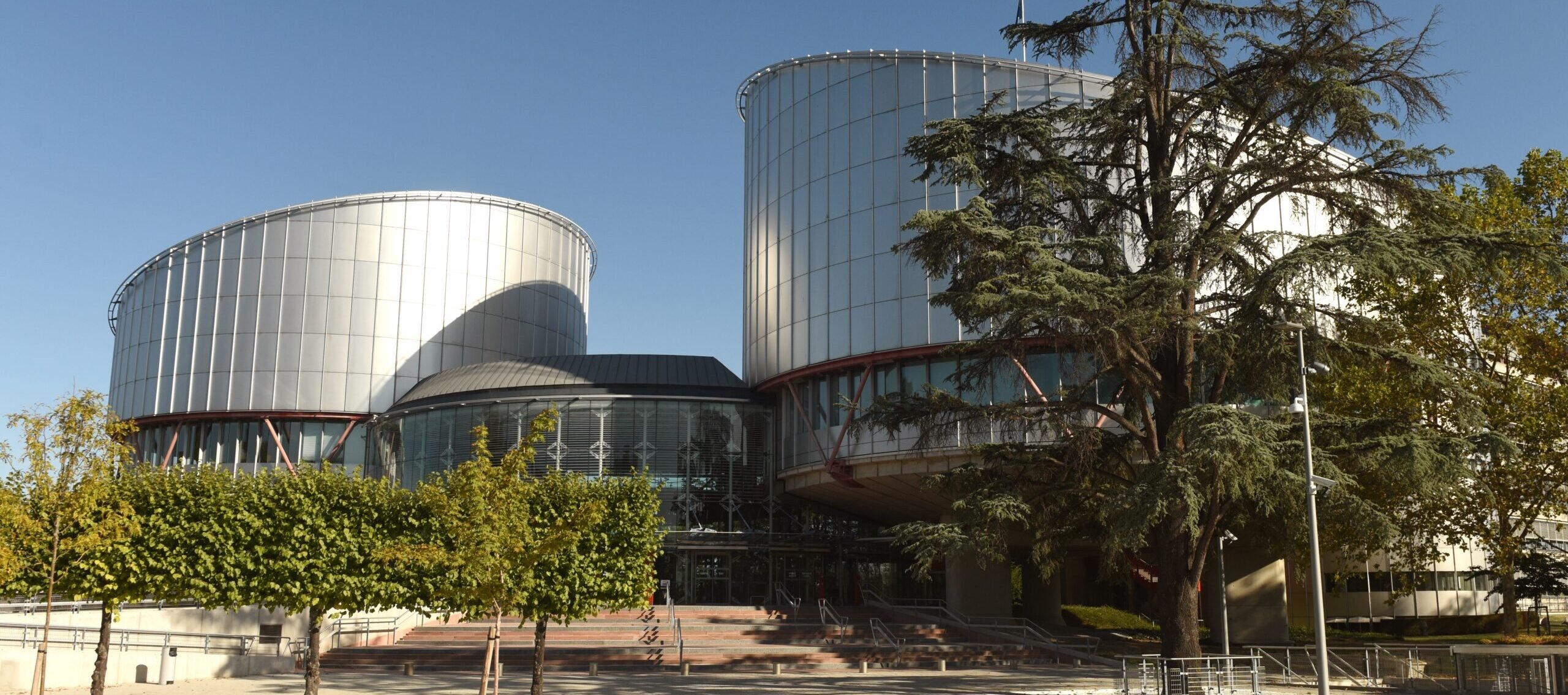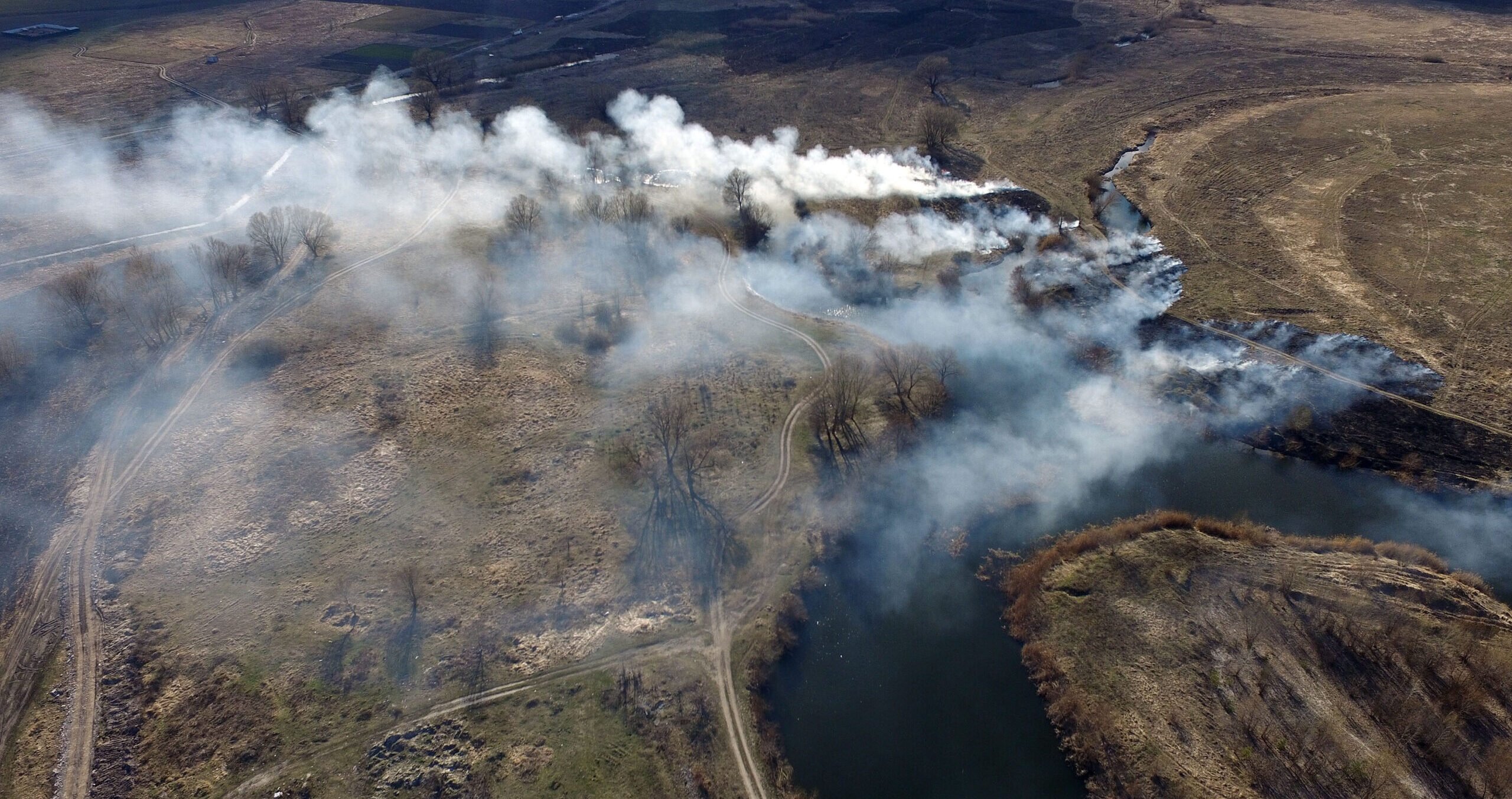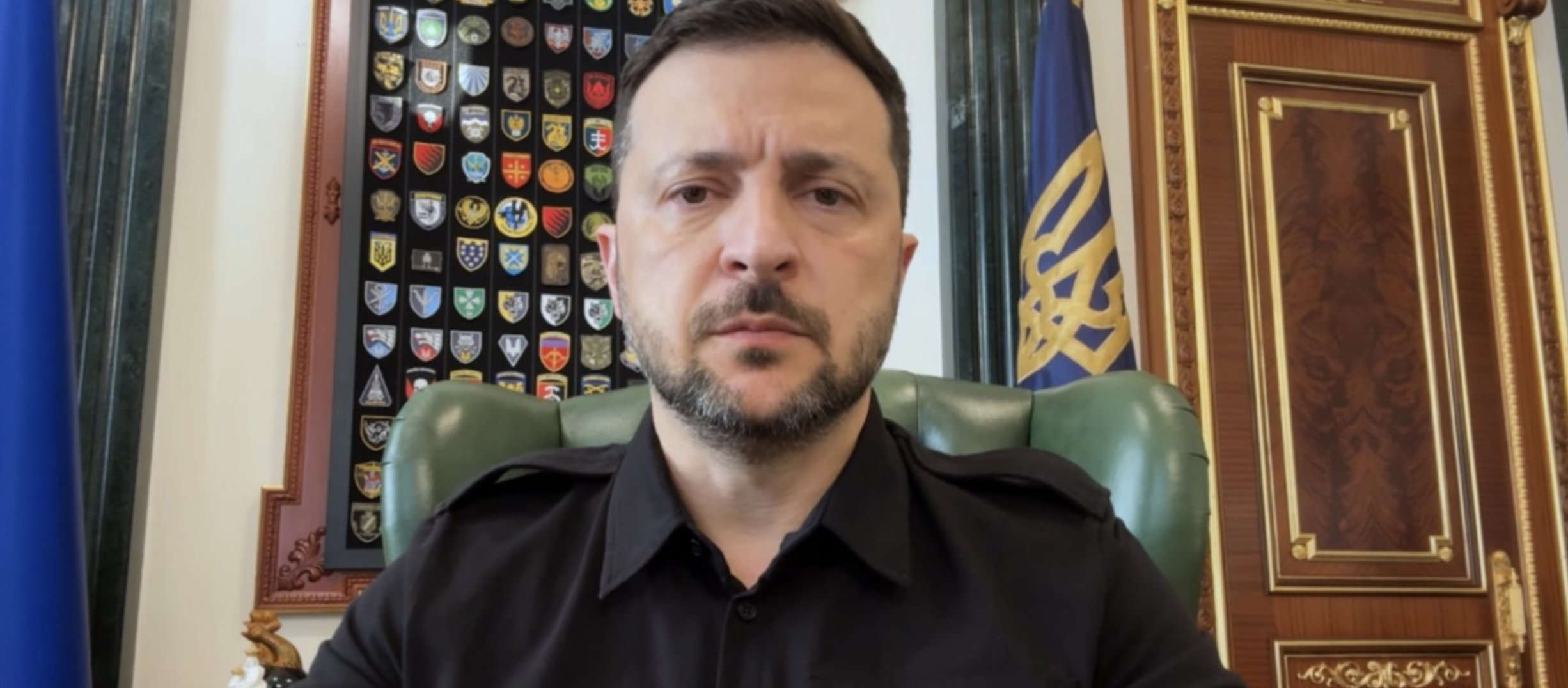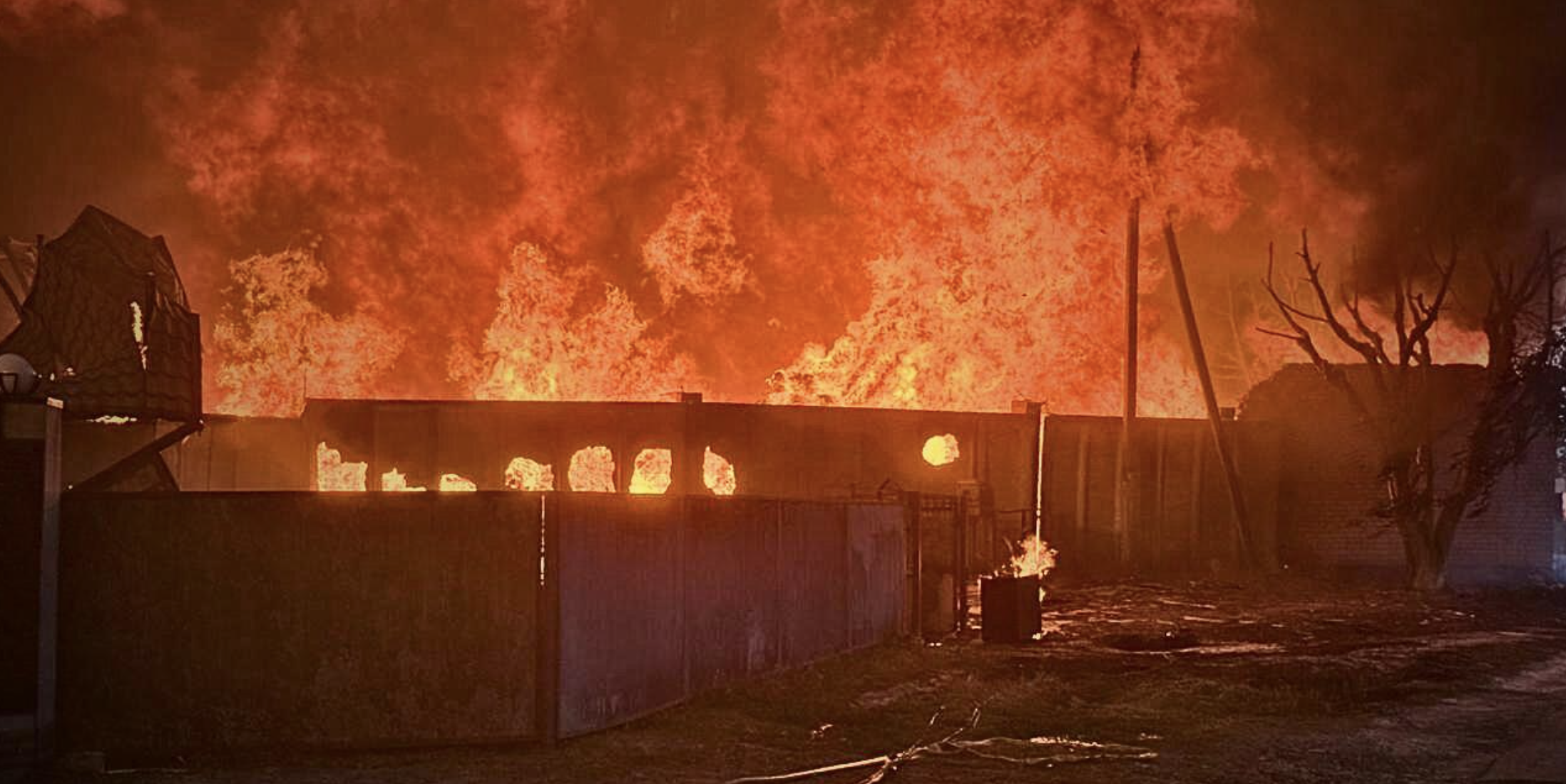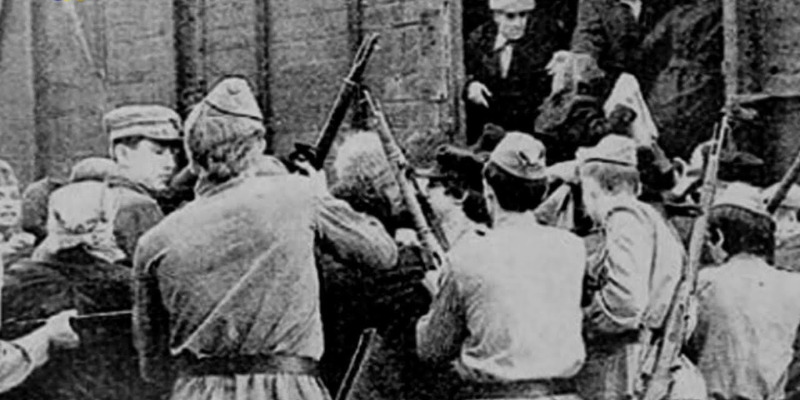
As Ukraine appears to begin a counter offensive on northern Kherson Oblast to liberate territory on the north side of the Dnipro River before winter sets in, the enemy is deporting an estimated 60,000 Kherson residents to temporarily occupied territory. Knowing that this operation will involve the trampling of human rights, the tiny kremlin dictator has declared martial law to cover a bevy of war crimes.
The kremlin’s current ethnic cleansing campaign, ludicrously branded the “de-nazification of Ukraine”, is another attempt to wipe out Ukrainian identity for which it holds a particular animosity. In early September, the US government said during a United Nations Security Council meeting that hundreds of thousands of Ukrainians have been interrogated, detained and forcibly deported to Russia in “a series of horrors” overseen by the kremlin dictator.
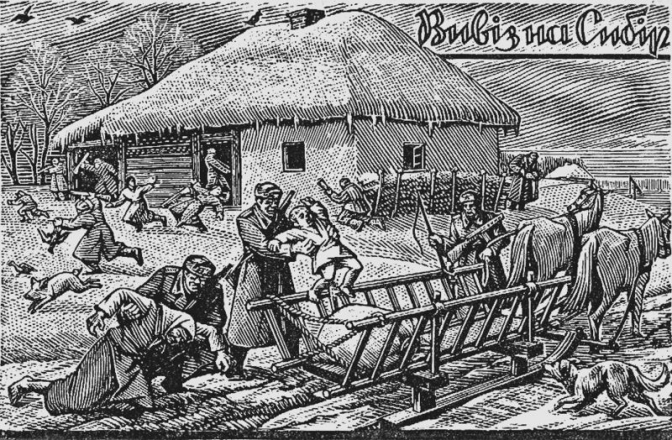
“Exile to Siberia” depicts forced deportation of Ukrainian peasants by russo-soviet authorities. (TVOEMISTO)
Since February 2022, it is estimated that russia has forcibly deported up to 1.5 million Ukrainians including hundreds of thousands of children. While forced deportation is a mere crime against humanity, the deportation of children falls into the definition of genocide against a people.
First step – filtration
Civilians taken from Mariupol are processed at enemy filtration camps in occupied Donetsk territory. (CNN)
The fear is that a large number of the deportees will be sent to filtration camps to assess their loyalty to the Kremlin before facing exile to remote impoverished regions of the enemy’s empire. Filtration is the process wherein civilians are held in prison-type facilities to undergo loyalty screenings that include “biometric data, including fingerprints and front and side facial images; conducted body searches, and searched personal belongings and phones; and questioned them about their political views.”
In an address to the UN Security Council in September US Ambassador Linda Thomas-Greenfield painted the scenario:
“You are escorted, against your will, to a center to undergo filtration. You’re terrified about what happens next, because your grandmother told you stories of her friends and neighbors disappearing under the Soviet Union – and even what Russia did to its own citizens during the war in Chechnya.
“You are separated from your partner and your children. Your personal biometric information is recorded. Your Ukrainian driver’s license and passports are confiscated. Your cell phone is searched for perceived anti-Russian messages.
“You’re stripped of your clothes. You are interrogated. You are beaten. You hear gunfire and screams from rooms next door – others deemed more threatening are being tortured and killed.”
Ethnic cleansing
An emptied Crimean Tatar village before russian colonization, 1945. (Wikimedia Commons)
The russians have been using deportations as a form of social engineering since the days of empire, arising from an insatiable chauvinistic need to russify kremlin-controlled land. The russo-soviets were aggressive in brutally relocating hundreds of millions of non-russians and other “undesirables” from western empire lands to the far east. The voids left by famine, holocaust and mass deportations were filled with ethnic russian, dispatched to emboss russian culture and language in depopulated places.
The russo-soviets under Stalin ethnically cleansed whole nationalities from their traditional homelands to remote areas of central asia and the far east. Ethnic groups that suffered mass deportation include Armenians, Azerbaijanis, Balkars, Chechens,Chinese, Crimean Tatars, Estonians, Finns,Germans, Greeks, Ingush, Karachays, Kalmyks, Koreans, Kurds, Latvians, Lithuanians, and Turks.
De-Kulak-Ization
“Instead of Kulak bread, socialist bread” reads the propaganda banner on the side of a collective farm truck near Kyiv in 1932. (Stanford)
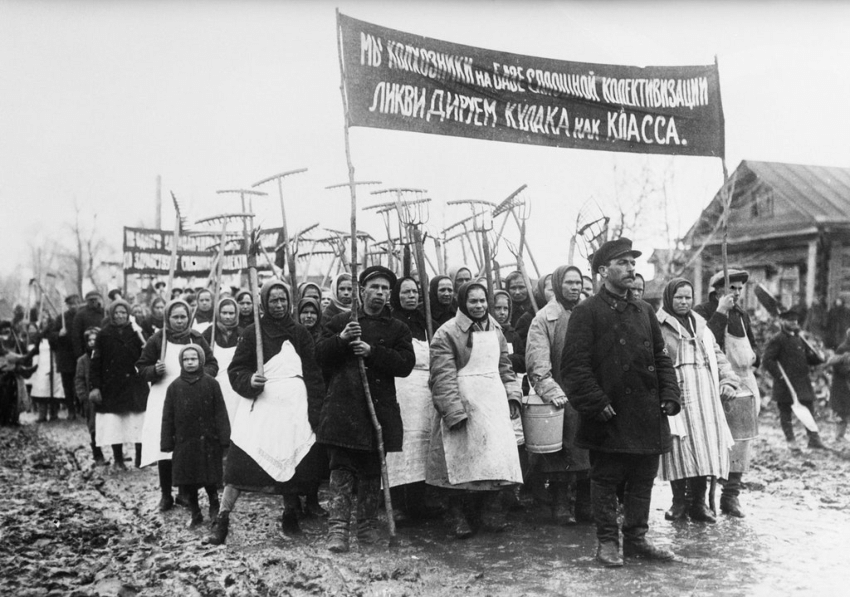
Russo-soviet peasants march under a propaganda banner promising to liquidate the agrarian middle-class. (Romancing)
In the current russian war on Ukraine, the invaders use the word “kulak” as an insulting name for Ukrainians. Kulak was originally a term for a land-owning peasant, a successful farmer. You won’t find it in the russo-soviet version of history, but, by the 19th century, Ukraine had the largest and wealthiest agrarian middle class in Europe.
As the United States fought a civil war to free African-Americans from slavery, the russian empire abolished its enslavement of russian peasants. However, liberated serfs had severely limited rights and crushing tax burdens that kept them in poverty until the Bolshevik revolution in 1917 and the collectivization of agriculture in russo-soviet-occupied lands.
Russian poverty and squalor compared to Ukrainian enterprise was a perfect tool for the Bolshevik’s social division campaign in the early 1900s. Lenin described kulaks as “bloodsuckers, vampires, plunderers of the people and profiteers, who fatten themselves during famines”, declaring them enemies of the poor russian farmer and loyal proletariat. Stalin’s drive to collectivize farming instigated a campaign of “kulak liquidation” that included seizure of lands, mass deportation, mass murder and the starvation of millions during the Holodomor man-made famine.
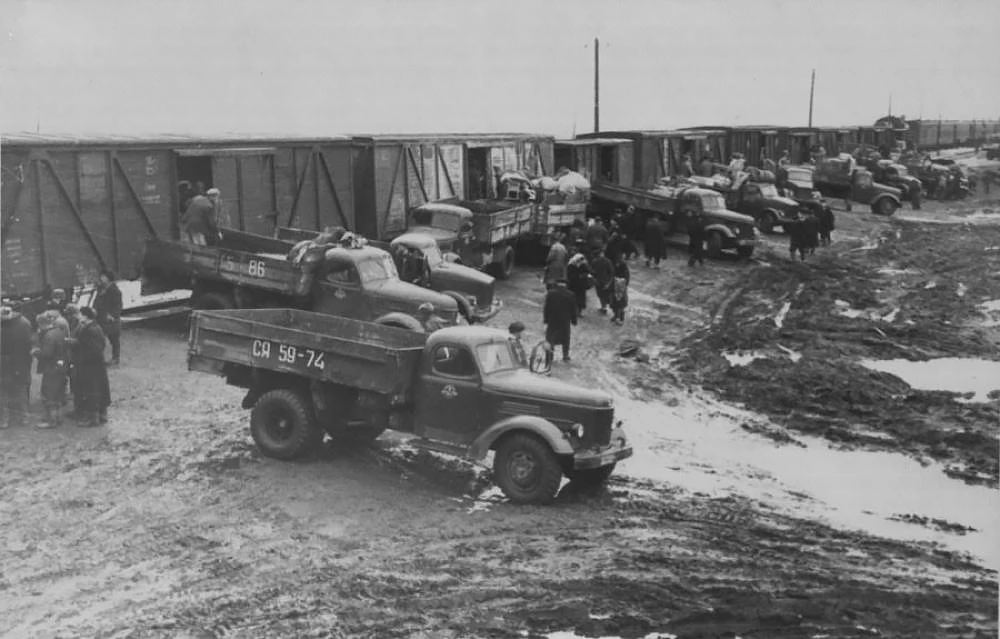
“Operation West” targeted russo-soviet “undesirables” – Ukrainian patriots in western Ukraine. Almost 80,000 filtered Ukrainians were stripped of their assets and forcibly deported to the russian far east in 1947. (Euromaidan Press)
International law
Forced deportation of enemies of the russo-soviet people from the Baltics, 1949. (Communist Crimes)
Unlike combatants who, once captured, are held as prisoners of war and may be moved to enemy territory, the mass deportation of civilians involves a number of war crimes including ethnic cleansing and genocide.
Ethnic cleansing is when a state takes action to eliminate, through deportation and mass murder, of members of an unwanted ethnic group in order to establish an ethnically homogenous geographic area.
Genocide is defined as operations with the intent to destroy a national, ethnic, racial or religious group. The deporation of children is considered a form of genocide in international law. In the current war, russia has been forcibly removing hundreds of thousands of Ukrainian children, sending them to russia where they are stripped of their identities and put up for adoption by russians.
What’s it all for?
Civilians taken from enemy-occupied Kherson line up at Dzhankoy railway station in Crimea. (RFERL)
What vision of the world does the russian character embrace that requires the constant drive to russify an imaginary “russian world” from the Pacific Ocean to the Atlantic?
A decade ago, Ukraine’s majority russian-speaking east (having been russified with russian colonists from Tsarist times) had strong support for a russian-vector in foreign policy and brotherly relations. Putin’s follies of brutal aggression have completely wiped out this once large and influential political base in Ukraine. Millions of Ukrainian residents of russian origin self-deported to the motherland since the russian invasion of 2014, while support among the vast majority of Ukrainians who have stayed has evaporated.
For over a century, russia has tried to mass murder and displace millions and million of Ukrainians. Yet, today, the empire is losing a full-scale war against Ukraine. Humiliated before the world, moscow threatens the use of weapons of mass destruction on civilians – like an out-of-control child throwing a tantrum.
As the kremlin drafts its poor ethnic minorities as canon fodder on the frontlines in Ukraine, it is clear that decades of terror hasn’t produced a peaceful “russian world”. Are russians trapped in a cycle of insanity, repeating the same thing over and over and expecting a different outcome? Or is the violent expression of resentment and terror against “others” the whole point?
Sources
- Russia accused of Mass Deportations in Kherson
- Hundreds of thousands of Ukrainians forced to Russia, U.S. says
- ‘It was killing me’: Mother accuses Russia of forcibly deporting her son from Ukraine
- Russian filtration camps for Ukrainians
- “We Had No Choice” “Filtration” and the Crime of Forcibly Transferring Ukrainian Civilians to Russia
- Remarks by Ambassador Thomas-Greenfield at UN Security Council Meeting on Russia’s filtration operations
- Stalin’s genocide against the “Repressed Peoples”
- Kulak
- Dekulakization
- The Practical Guide to Humanitarian Law
- Geneva Conventions
- Ukraine probes deportation of children to Russia as possible genocide
